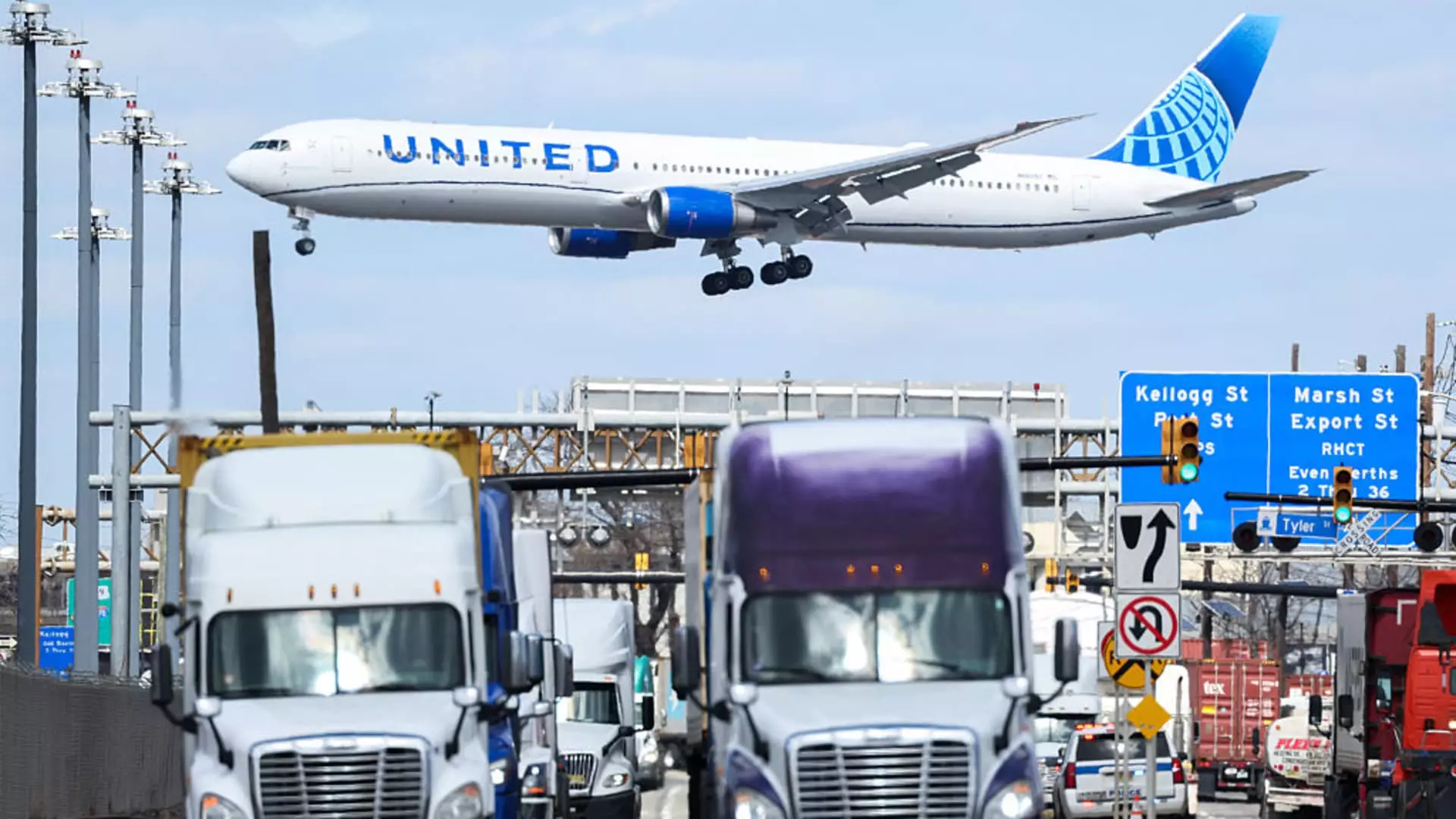In an age characterized by economic volatility, United Airlines has taken a bold step in addressing challenging market conditions. On Tuesday, the airline maintained its optimistic outlook for the year, yet chose to outline a contingency plan should the United States slip into recession. This dual forecast is not merely a reflection of standard business prudence but rather indicative of the unpredictable macroeconomic landscape engulfing the nation. While the airlines’ steadfast commitment to delivering profits remains commendable, the very admission of uncertainty is a telling signal of just how precarious the current economic environment truly is.
The decision to present multiple scenarios underscores a strategic maneuver to reassure shareholders and consumers alike, despite the looming question marks surrounding the economy. It is fascinating that United Airlines can project both profitability and prudent caution, positioning itself strategically to mitigate risks that could stem from an economic downturn. However, as much as that demonstrates calculated foresight, it also raises red flags about the broader implications for businesses in similar sectors relying on discretionary spending.
Keep Your Eye on the Bookings
Despite the unsettling mention of potential recessory impact, United Airlines reports a stable booking trend overall, buoyed primarily by international and premium cabin demand. The airlines’ fortunes are not entirely entangled with domestic travel trends, which have been tepid at best. The 4% reduction in domestic flight capacity beginning in the third quarter is a stark recognition of strained demand within that segment. In an age where consumer travel behavior can pivot on a dime, United’s ability to shift focus towards pricier, international trips reveals an acute understanding of market dynamics and customer preferences.
The real question lies in how long this stability in bookings can endure. Historically, travel spending is one of the first casualties in austere economic times, leading to skepticism about whether the current trend can be sustained. United Airlines’ winning strategy thus far has been to adapt to that ever-shifting public psyche, and credit is due for that. But can it really hold on amidst rising inflation and mounting financial pressures on the average consumer? The resilience shown today must confront tomorrow’s realities.
The Numbers Don’t Lie: Evaluating Earnings
United Airlines reported an impressive profit of $387 million during the first quarter, an admirable turnaround compared with the previous year’s loss. The adjusted earnings per share of 91 cents—beating Wall Street’s expectations—reinforces the notion that the airline industry can indeed thrive under adversity. It must, however, be noted that this profitability comes at a time when the national conversation revolves around inflation, government policies, and international conflicts that could create unforeseen ripple effects.
Even more revealing than the headline earnings is the fact that unit revenue from domestic flights declined by nearly 4%, juxtaposed against a commendable upturn of over 5% in international routes. This stark contrast can serve as a wake-up call for American non-travel businesses still struggling to gauge what a post-pandemic world will look like. The reality is clear: while it seems United Airlines capitalizes effectively on high-paying clientele, they must remain vigilant and adaptable to shifts in consumer spending habits intensified by economic factors.
A Competitive Landscape: United vs. Delta
United Airlines isn’t the only airline feeling the heat; its competitor Delta Air Lines has also moderated its growth plans due to the same economic uncertainties plaguing the industry. United Airlines’ CEO Scott Kirby confidently asserts that the multiyear strategy that has allowed the firm to flourish can be a weather vane for partner airlines as well. However, acknowledging that “impossible to predict” future earnings reflects more than cautious management; it suggests that even the savviest airlines need to prepare for the worst-case scenarios, and frankly, there is wisdom in that.
The admittance of vulnerability is not merely an airline issue but indicative of a broader economic sentiment that should permeate all industries within the realm of the capitalist engine. The embrace of a pragmatic, adaptive approach can be a model for businesses aiming to navigate these complex waters.
Consumer Sentiment: Trust and Assurance Are Key
What cannot be overlooked is how United Airlines communicates its outlook and management strategies. By setting the tone for transparency amidst a fog of uncertainty, they cultivate a stronger connection with consumers and shareholders alike—a necessary step if they wish to maintain loyalty in a fluctuating environment. As consumers navigate through economic anxiety, the assurance and stability offered by trusted brands could dictate their behaviors—traveling for less may not be as attractive as indulging in premium offerings.
United Airlines is effectively striking a balance between assertion and caution to navigate these tumultuous skies. Whether their frameworks will withstand upcoming challenges remains to be seen, but the agile adaptability showcased so far puts them in a favorable light amid the unpredictability that characterizes today’s economic climate.

